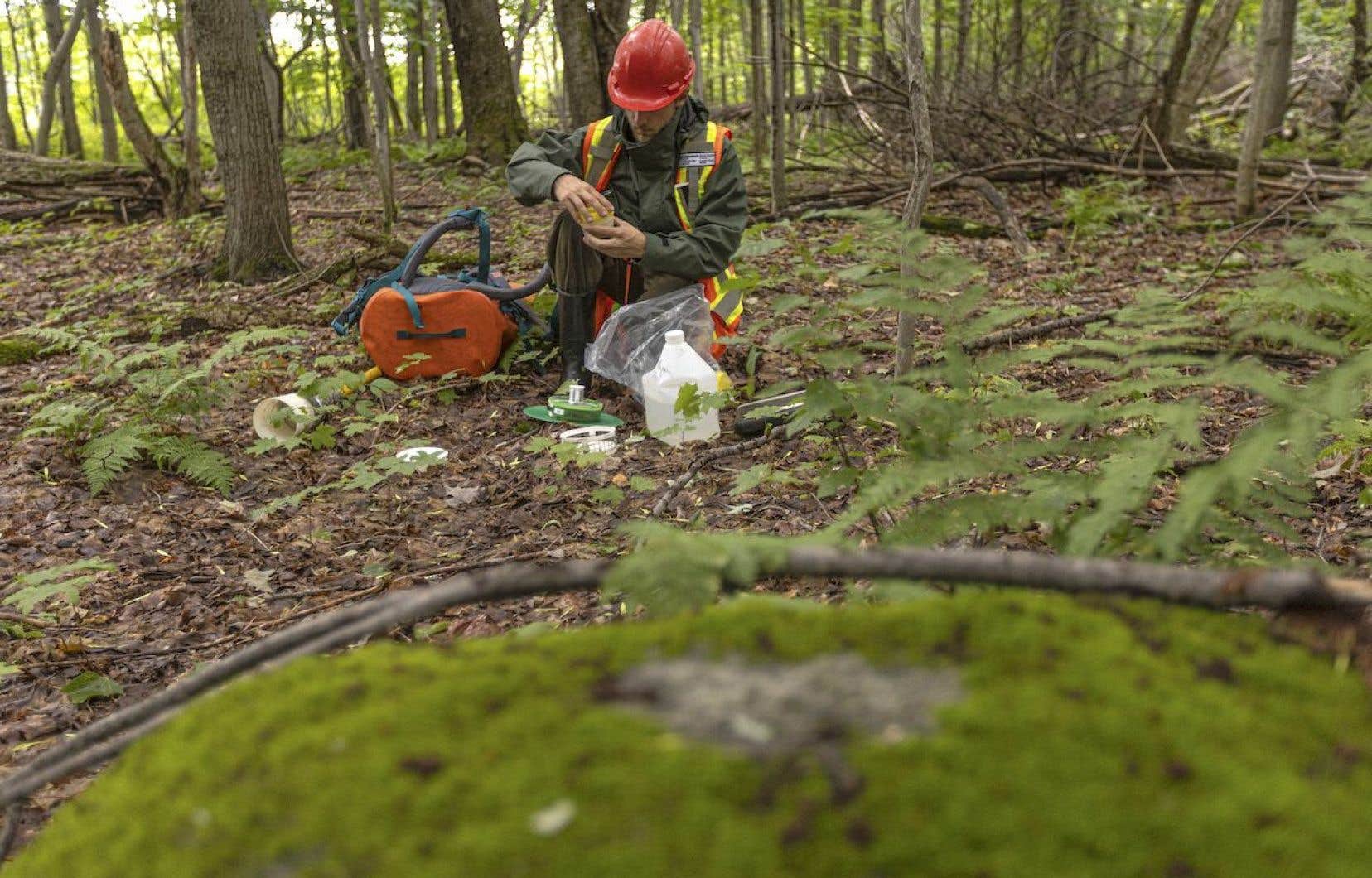This text is taken from the Courrier de la Planète. Click here to subscribe.
Flying bugs, beware of mosquito nets! A major insect trapping campaign is about to be launched in national parks in eastern Canada. Eventually, the data collected will make it possible to know whether there is indeed a generalized decline in insect populations.
In the next few days, flying insect traps will be deployed in each of the ten federal parks in the east of the country – including those, in Quebec, of Mauricie, Archipel-de-Mingan and Forillon. The winged catches will be compared to those caught in 2013 on the same sites.
“Updating the data every five or ten years is valuable, because it tells us what is happening in the long term,” says entomologist Christian Hébert, a scientist at the Laurentian Forestry Center ( Natural Resources Canada), which is leading the project.
Last summer, The duty reported on the results obtained by Mr. Hébert suggesting the decline of insect populations in Quebec. In the Parc des Grands-Jardins, for example, the researcher noted a drop of around 60% in the number of flying beetles in the space of 20 years.
This report fell under the eyes of Daniel Sigouin, an ecologist at Forillon National Park. It was “the spark plug” that prompted her to approach Mr. Hébert to carry out a project in the Gaspé park. The entomologist was obviously delighted by the proposal. The two men began to collaborate last fall.
The beauty of the matter is that they weren’t starting from scratch. About ten years ago, arthropod traps were set in all of Canada’s national parks, including Forillon, at the request of a team from the University of Guelph. This was building a large genetic database. Repeating the exercise would make it possible to draw up a new inventory, ten years later.
An eye on biodiversity
In fact, why just see Forillon again? “We started to think a little bigger,” says Mr. Sigouin. I contacted my colleagues from Quebec and the Maritimes. All the parks have decided to embark on the project to redo the sampling. »
The new version of the project therefore reuses the same protocol as in 2013 and is deployed on the same sites. “Malaysia” type traps, consisting of large nets, are set these days. Every week in the summer, park employees will collect the jars of ethanol where the specimens fall.
“At first, the thing that we deemed most important was to acquire the samples,” says Mr. Hébert. This project, which was set up very quickly, operates with “a minimum of resources”. The researcher now hopes to find funding to, in a second step, sort and count the insects captured – an obviously tedious task.
The evolution of the populations of certain control groups will make it possible to evaluate, in a more global way, the tendencies with regard to the entomofauna. The scientists would also like to analyze the fragments of genetic material in the jars of ethanol to list the species present.
For the total number of insects is one thing; their diversity is another. Mr. Sigouin also remembers being impressed by the panoply of arthropods found in his park in 2013: around 4,000 different species, of which only 657 had already been named by taxonomists. “The project enabled us to detect one of the greatest diversities of arthropods in the country,” he says. Is this wealth maintained?
Back to Anticosti
Mr. Hébert has not yet completed the analyzes needed to find out whether insect populations are declining in Jacques-Cartier Park, where The duty accompanied him last July. It should come shortly. At the same time, he launched other projects in the field.
In addition to federal parks, it will target Anticosti Island this summer. The entomologist had set traps there at the beginning of his career, in 1993. The new round will make it possible to establish a comparison, 30 years later. “It’s fantastic,” enthuses the researcher, who wishes to bequeath a lasting system for monitoring entomological diversity before retiring.
Two members of his team will therefore go to Anticosti around mid-June to install traps. Employees of the Quebec Ministry of the Environment and the Société des establishments de plein air du Québec (SEPAQ) will then collect the insects every week throughout the summer.
For the moment, it is difficult to explain the exact causes of a potential generalized decline of insects in Quebec. Habitat destruction, pesticide use and global warming likely contribute to the problem. Portrait of the major trends will help to understand the main driver, hope the researchers.
Comments and questions? Write U.S!
